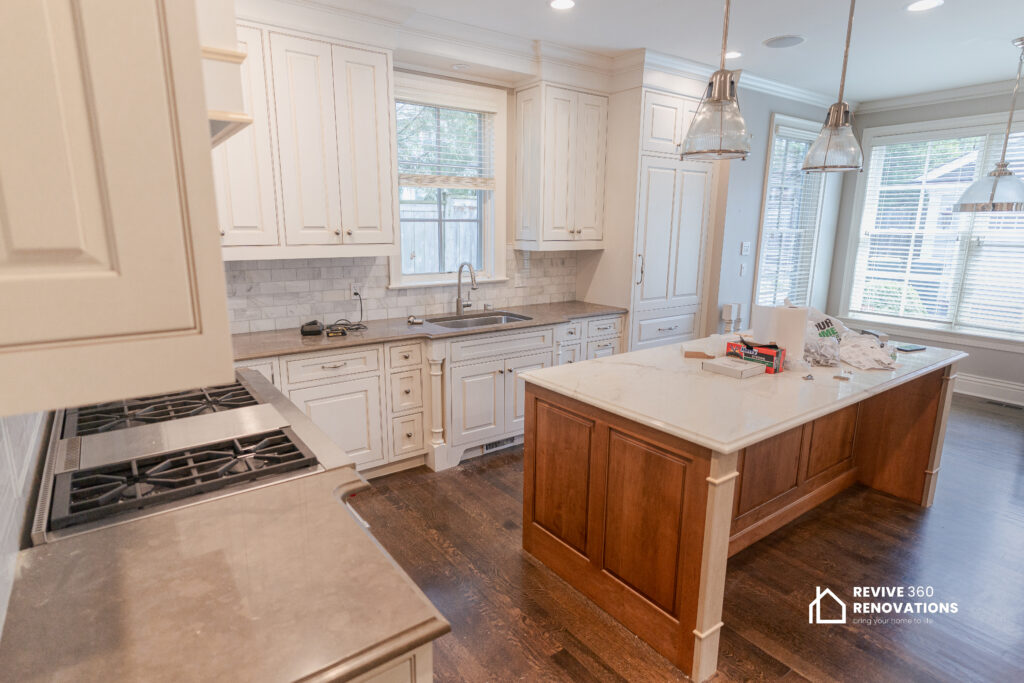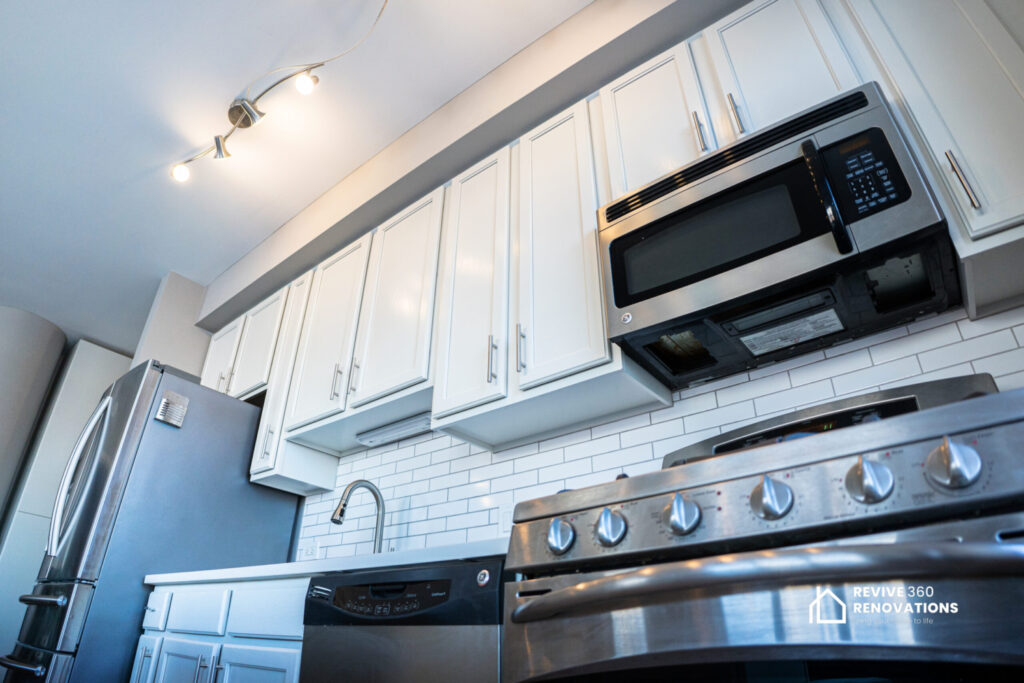To fix your kitchen cabinet hinges, start by identifying common problems like loose screws, misalignment, or squeaking. Use a screwdriver to tighten any loose screws, and adjust misaligned doors by loosening the hinge screws, repositioning the door, and retightening. For squeaky hinges, clean them and apply a lubricant like silicone spray. If hinges are damaged, replace them with new ones that suit your kitchen cabinets. Need more tips for a smooth finish? There’s more to uncover!
Identifying Common Problems With Cabinet Hinges
Cabinet hinges play an essential role in the functionality of your kitchen cabinets, and identifying common problems is the first step to fixing them.
You’ll notice issues like doors that won’t close properly, uneven gaps, or squeaking sounds. These can stem from various hinge types, including concealed or surface-mounted hinges.
To troubleshoot, check if screws are loose or if the hinges are misaligned. Kitchen cabinet installation tips suggest adjusting or replacing hinges might be necessary.
Regular maintenance can help prevent these issues, ensuring your cabinets function smoothly and look great. Addressing these problems promptly will keep your kitchen organized and efficient.
Tools You’ll Need for the Repair
To tackle the repair of kitchen cabinet hinges effectively, you’ll need a few essential tools. First, gather various screwdriver types, including flathead and Phillips, as different hinge styles may require specific screws.
A cordless drill can speed up the process, especially for multiple hinges. Don’t forget a measuring tape to guarantee proper alignment when reattaching hinges. Additionally, a level helps keep everything straight.
Finally, keep a small container handy for screws and other small parts to avoid losing them during the repair. With these tools at your side, you’ll be ready to tackle those pesky cabinet hinge issues with confidence!
Tightening Loose Hinges
With your tools ready, it’s time to focus on tightening those loose hinges. Start by checking each screw; if any are loose, use a screwdriver to tighten them.
Be careful not to overtighten, as this can damage the wood. For added stability, consider using wood glue in the screw holes if they’re stripped.
Apply these tightening techniques consistently to all hinges, ensuring smooth cabinet operation. Regular hinge maintenance will prevent future issues, saving you time and effort down the line.
Realigning Misaligned Cabinet Doors
Sometimes, misaligned kitchen cabinet doors can be an eyesore and affect functionality. To fix this, start by checking the hinges.
Loosen the hinge screws slightly, which allows for some movement. Gently pull or push the cabinet door to achieve proper alignment.
Once it’s where you want it, tighten the screws to secure the door in place. Make sure to check the alignment again after tightening, as it might shift slightly.
This process of adjusting hinge screws will help you achieve perfectly aligned cabinet doors, enhancing both the appearance and usability of your kitchen cabinets.

Lubricating Squeaky Hinges
When your cabinet doors start to squeak, it can be a frustrating distraction in your kitchen.
Fortunately, there are effective squeaky hinge solutions that can restore peace.
Begin by identifying the squeaky hinges and clean them with a cloth to remove dirt.
Next, apply the best lubricants, such as silicone spray or WD-40, directly onto the hinge pins.
Open and close the doors a few times to guarantee the lubricant penetrates properly.
If the squeak persists, reapply the lubricant as needed.
A little maintenance goes a long way in keeping your cabinets quiet and functioning smoothly.
Replacing Damaged Hinges
Damaged hinges can compromise the functionality and appearance of your kitchen cabinets, so addressing them promptly is crucial.
Start by choosing new hinge types that best suit your cabinets and style. Once you’ve selected your hinges, remove the old ones by unscrewing them carefully.
Align the new hinges with the existing holes or drill new ones if necessary. Make certain they’re level and secure them in place.
Test the cabinet door to verify it opens and closes smoothly.
Frequently Asked Questions
Can I Paint My Cabinet Hinges?
Yes, you can paint your kitchen cabinetsKitchen Cabinet Painting Chicago and the hinges! Use hinge painting techniques like cleaning and priming. Choose durable paint types, such as spray paint or enamel, to guarantee a long-lasting finish that withstands wear and tear.
How Often Should I Maintain My Cabinet Hinges?
You should check your cabinet hinges at least once a year. Regular hinge maintenance frequency helps guarantee smooth operation. Prioritize cabinet hardware care by cleaning and lubricating hinges to prevent wear and tear over time.
Are There Different Types of Cabinet Hinges?
Yes, there are several cabinet hinge types, including concealed, overlay, and butt hinges. Understanding hinge installation techniques for each type helps you achieve a seamless look and ideal functionality in your cabinetry.
What Causes Cabinet Hinges to Wear Out?
Cabinet hinges wear out due to various factors like repeated use, moisture exposure, and poor quality hinge materials. These wear factors can lead to misalignment or difficulty in opening and closing your cabinets smoothly.
Can I Replace Hinges With Different Styles?
You can replace hinges with different styles, but consider style compatibility and hinge functionality. Make sure the new hinges fit your cabinets properly, maintaining their operation while enhancing your kitchen’s overall aesthetic appeal.
Conclusion
By following these simple steps, you can easily fix your kitchen cabinet hinges and keep your cabinets functioning smoothly. Whether you’re tightening loose screws, realigning doors, or replacing damaged hinges, a little effort goes a long way. Don’t forget to lubricate squeaky hinges to maintain that quiet, seamless operation. With just a few tools and some time, your cabinets will look and work like new again. Enjoy your refreshed kitchen space!

